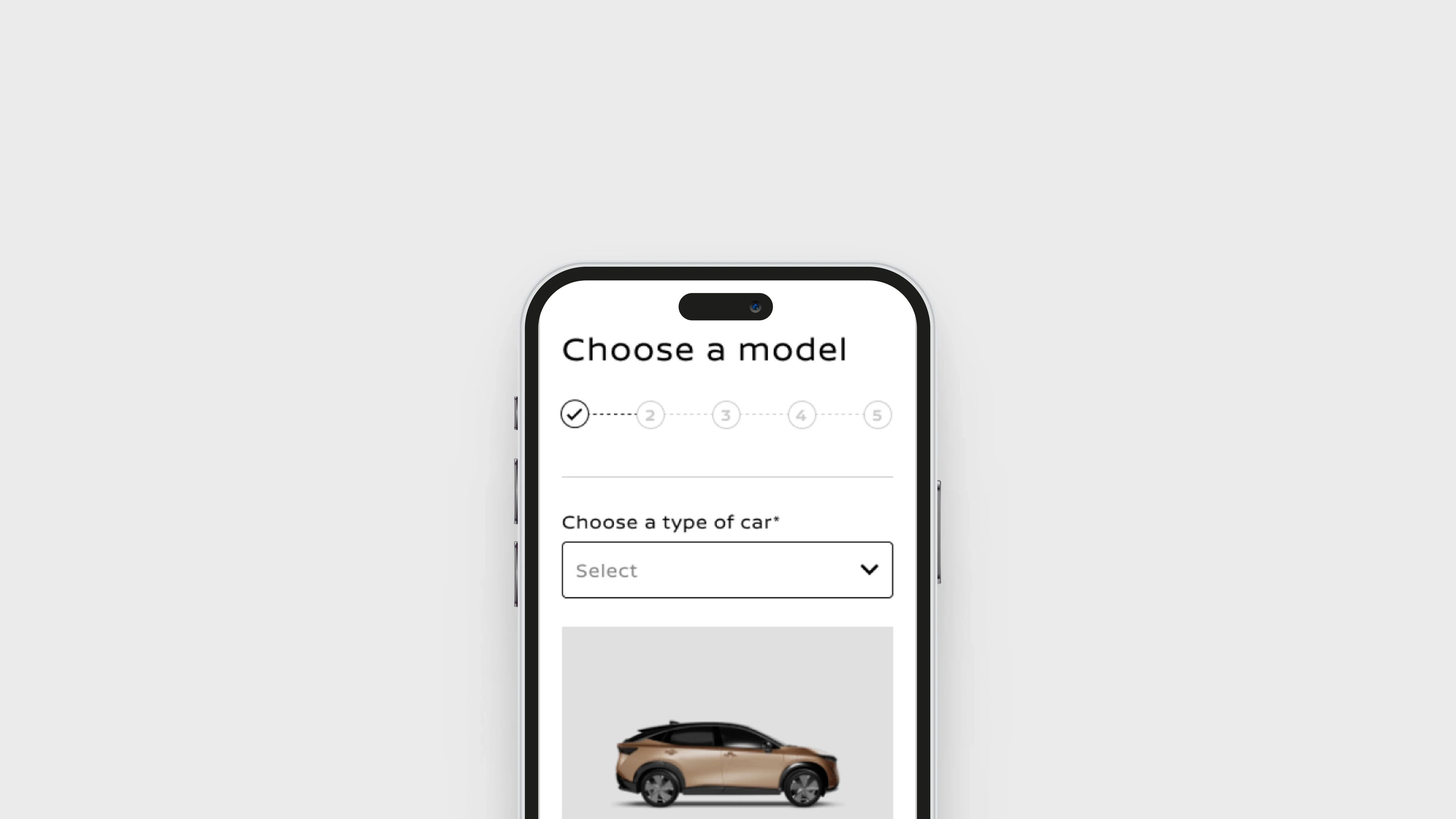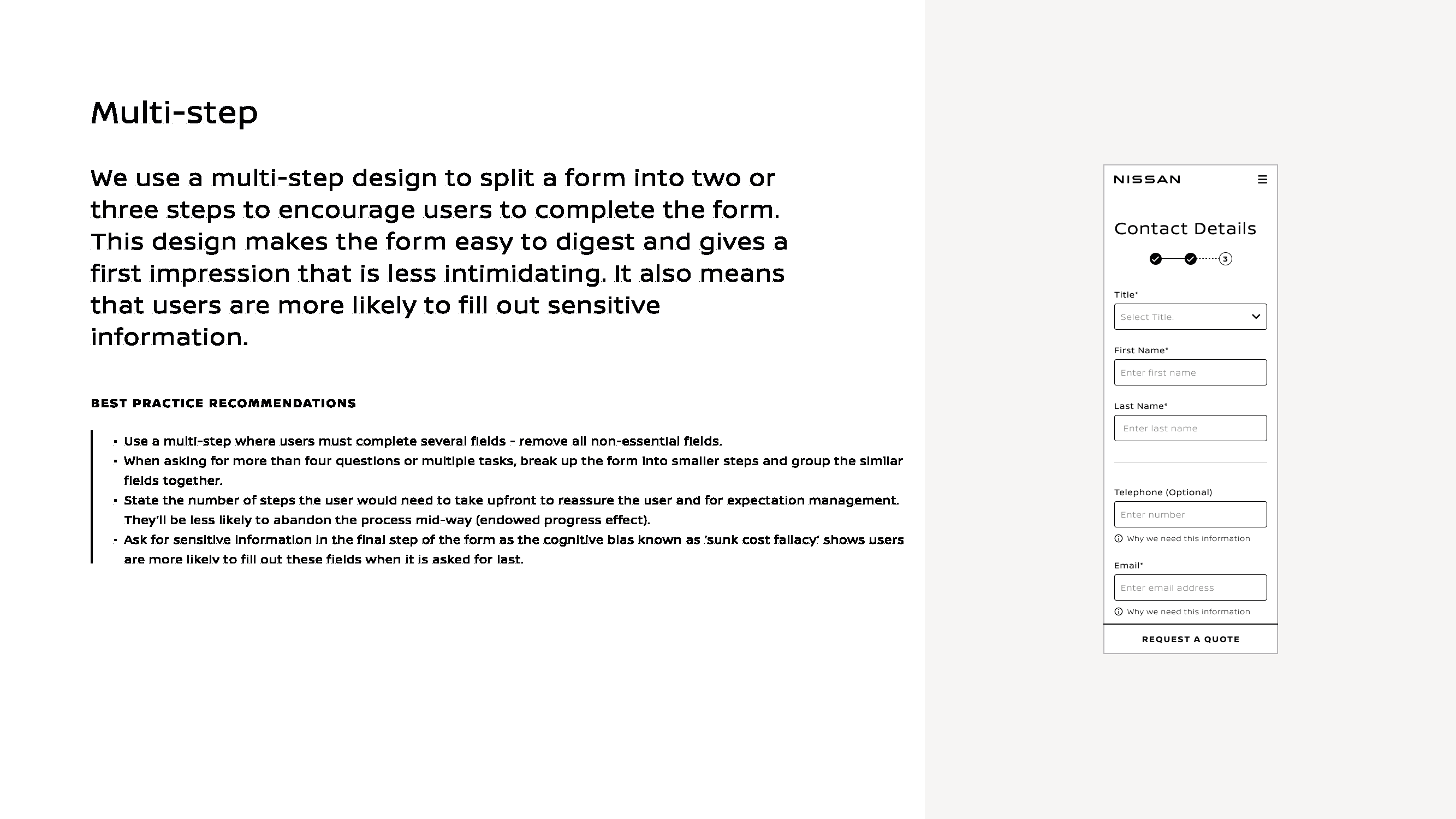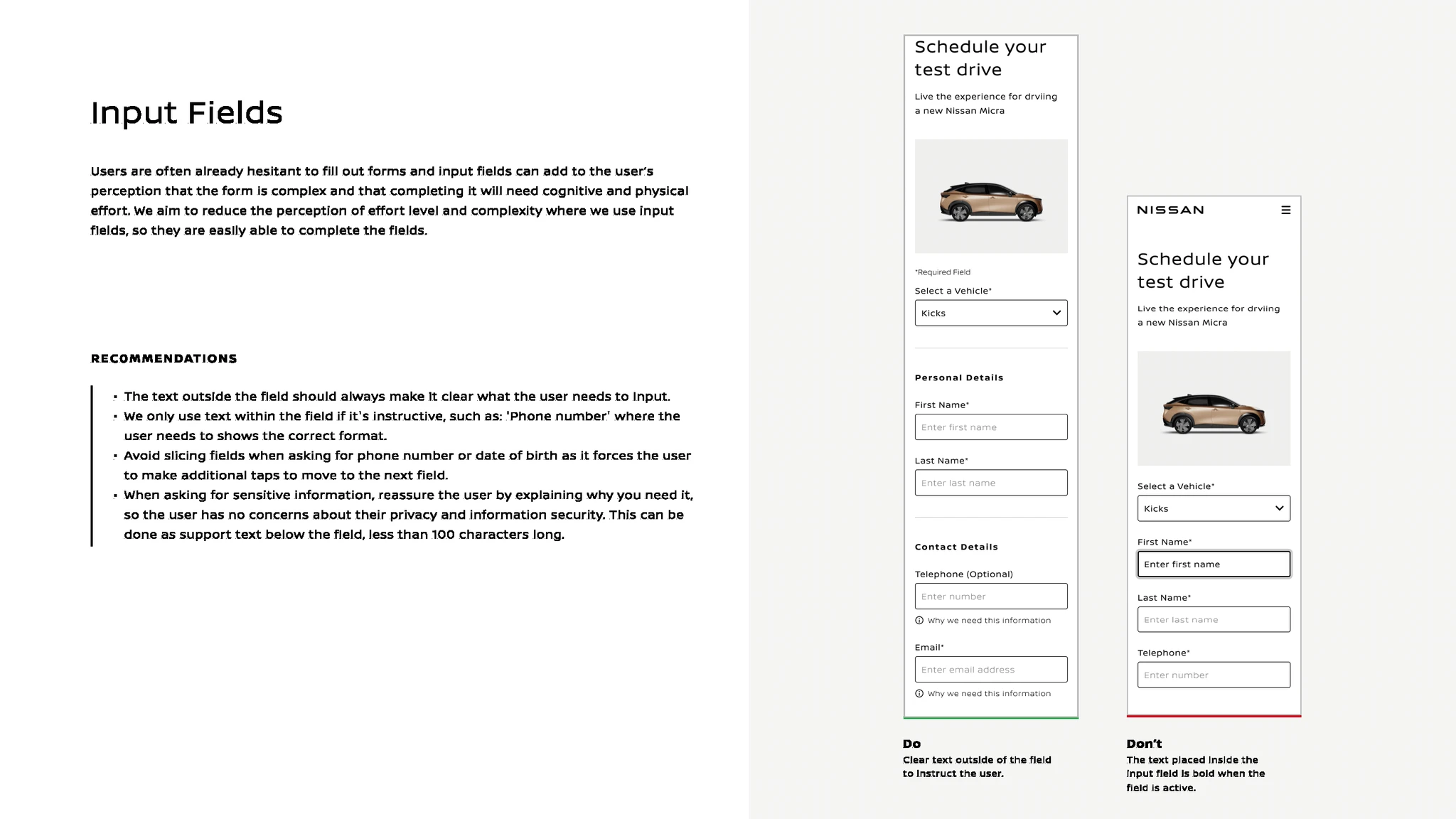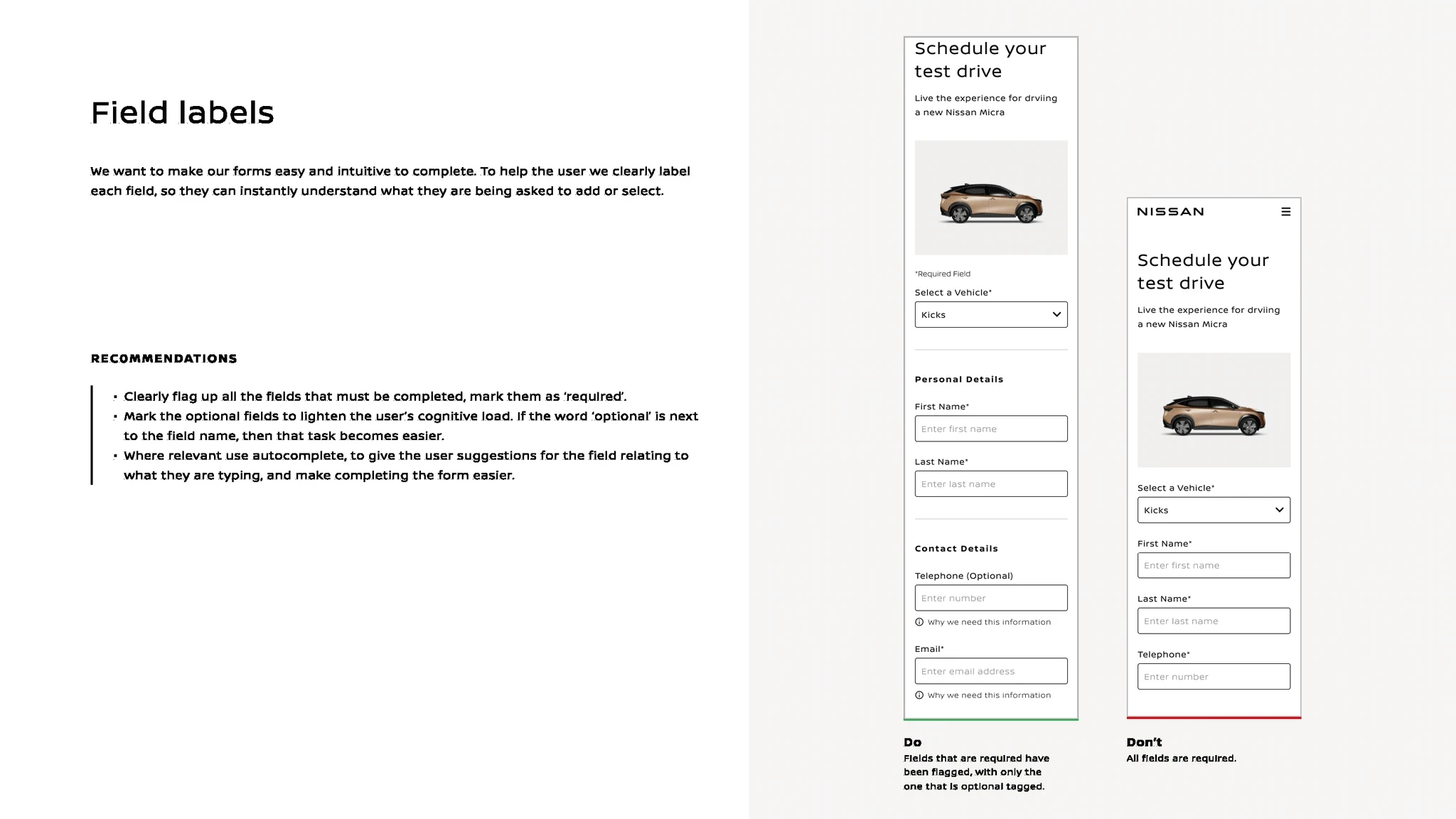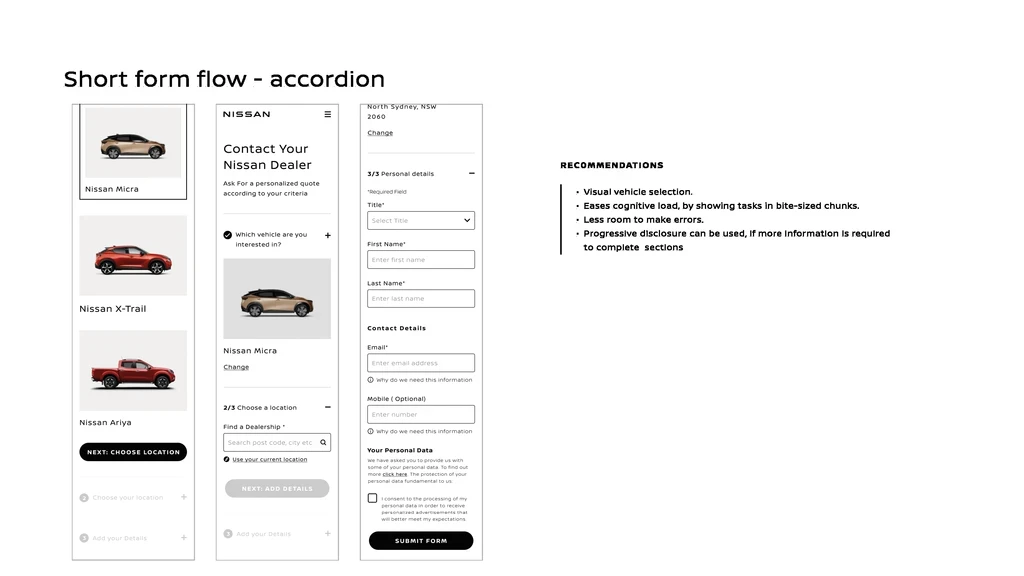Type of Project:
Automotive
Summary:
UX enhancement and optimisation guidelines.
Company:
Publicis Sapient
We used a range of primary and secondary research methods. We identified pain-points and used our UX principles to create solutions.
We use the following rules to create forms that are intuitive, inviting and easy to complete.


Current Nissan practice was to have several long pages of form, with aggressive feedback to the user when there is an error.
The main issue Nissan faced was that their forms were not comprehensive, one standard form was used for all areas of the experience when it should be optimised accordingly. Nissan has over 32 markets in the world with different users and different cultural views, therefore it is important that their experience is tailored.
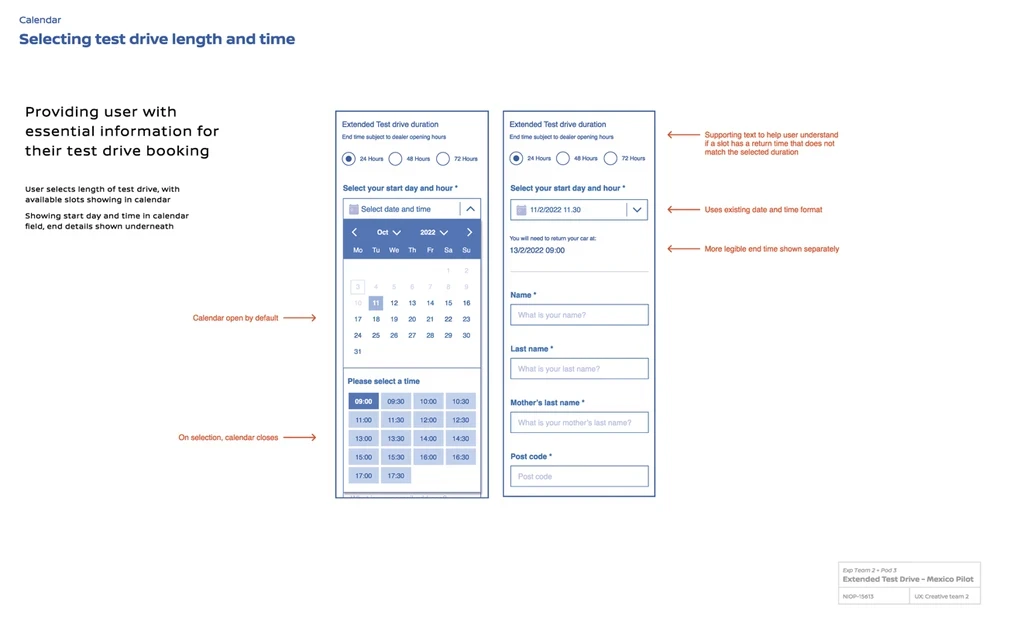
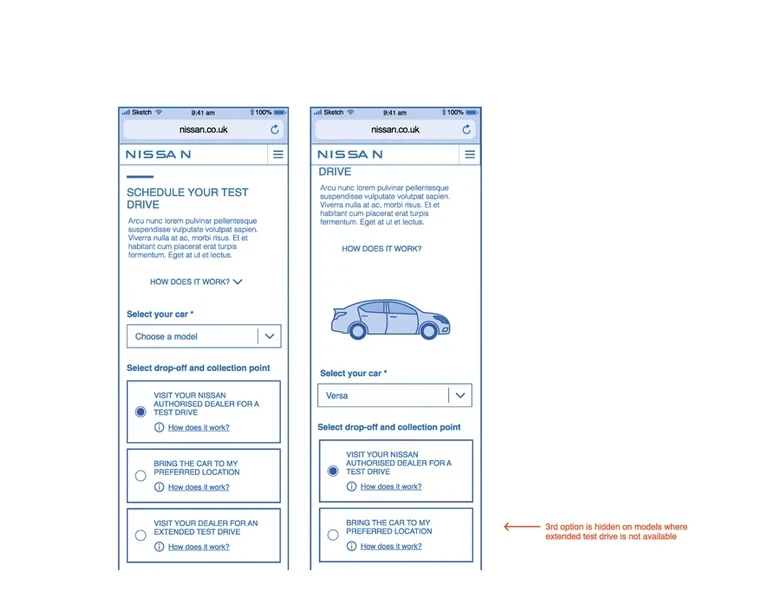
Initial ideation was conducted by creating wireframes to discover the best interactions and enhance the overall user experience.
When designing forms for Nissan, we aim to reduce cognitive load by keeping the content bitesize and contextual.
We adapt the design to the user’s mindset, in order to encourage conversions and reduce abandonment. We divide the content into logical groupings and provide singular user actions wherever possible.
Therefore a set of UX best practice recommendations were created.

To ensure that Nissan offers a best in class form experience, we researched UX best form practices, and looked at ways to help eliminate existing pain points and align with the latest PACE design strategy WDS 1.5. We also looked at experience principles for forms, which recommend dividing content into logical groupings to reduce cognitive load, abandonment rates and encourage conversions.
We created a set of recommendations that show how to adapt short and long forms by using either a multi-step or accordion format, and when to use these different approaches.
A set of specific recommendations for Nissan was created to ensure consistency across markets.

